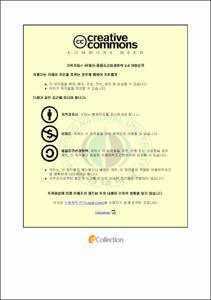Toluhydroquinone inhibits inflammatory mediators through NF-κB and MAPKs pathways in LPS-induced RAW264.7 cells
- Abstract
- Chemotherapeutic agents from several metabolites are used to treat many diseases. There are diverse marine organisms such as invertebrates, algae, bacteria, and fungi, which produce secondary metabolites. Toluhydroquinone is a secondary metabolites product of marine fungi Phoma herbarum and its bioactivity is rarely known. The purpose of this study is to investigate the anti-inflammatory mechanism of toluhydroquinone in lipopolysaccharide (LPS) -induced RAW264.7 cells. Toluhydroquinone inhibited nitric oxide (NO) production and prostaglandin E2 (PGE2), as well as reduced inflammatory mediator proteins including inducible nitric oxide synthase (iNOS) and cyclooxyganse-2 (COX-2) expression. Toluhydroquinone decreased the pro-inflammatory cytokines expression of tumor necrosis factor-α (TNF-α), interleukine-1β (IL-1β), and interleukin-6 (IL-6). Additionally, toluhydroquinone inhibited the phosphorylation of nuclear factor-κB (NF-κB). Also, toluhydroquinone reduced the phosphorylation of mitogen-activated protein kinases (MAPKs) pathway, which is involved extracellular signal-regulated kinase (ERK), c-Jun NH2-terminal kinase (JNK), and p38. Moreover, toluhydroquinone induced heme oxygenase-1 (HO-1) protein expression which is stress-inducible enzyme to effect cell protection, through nuclear factor E2-related factor 2 (Nrf2). These results indicate that the mechanism of toluhydroquinone effects on anti-inflammatory in LPS-stimulated RAW264.7 cells.
- Issued Date
- 2013
- Awarded Date
- 2013. 8
- Type
- Dissertation
- Publisher
- 부경대학교
- Alternative Author(s)
- Hwang, Duk Hyun
- Affiliation
- 대학원
- Department
- 대학원 미생물학과
- Advisor
- 김군도
- Table Of Contents
- INTRODUCTION 1
MATERIALS AND METHODS 7
Fungal isolation and culture 7
Extraction and isolation 7
Physicochemical data of compound 8
Drugs and reagents 9
Cell culture 9
Cell viability assay 9
Nitric Oxide (NO) assay 10
Enzyme-linked immunosorbent assay (ELISA) 11
Western blot analysis 11
Immunofluorescent staining 13
Statistical analysis 14
RESULTS 15
Effects of toluhydroquinone on cells viability 16
Toluhydroquinone inhibited NO and PGE2 production 18
Toluhydroquinone decreased iNOS and COX-2 protein expression 19
Toluhydroquinone reduced pro-inflammatory cytokine production 21
Toluhydroquinone suppressed phosphorylation of Akt and MAPKs 23
Toluhydroquinone inhibited phosphorylation of upstream and downstream of MAPKs 25
Toluhydroquinone inhibited phosphorylation of NF-κB and degradation of IκBα 27
Toluhydroquinone prevented NF-κB translocation 29
Toluhydroquinone induced HO-1 and Nrf2 protein expression 31
Toluhydroquinone stimulated HO-1 through p-38 and PI3K/Akt pathway 33
DISCUSSION 34
국문 초록 41
ACKNOWLEDGEMENT 42
REFERENCES 43
- Degree
- Master
- Files in This Item:
-
-
Download
 Toluhydroquinone inhibits inflammatory mediators through NF-κB and MAPKs pathways in LPS-induced RAW.pdf
기타 데이터 / 1.49 MB / Adobe PDF
Toluhydroquinone inhibits inflammatory mediators through NF-κB and MAPKs pathways in LPS-induced RAW.pdf
기타 데이터 / 1.49 MB / Adobe PDF
-
Items in Repository are protected by copyright, with all rights reserved, unless otherwise indicated.